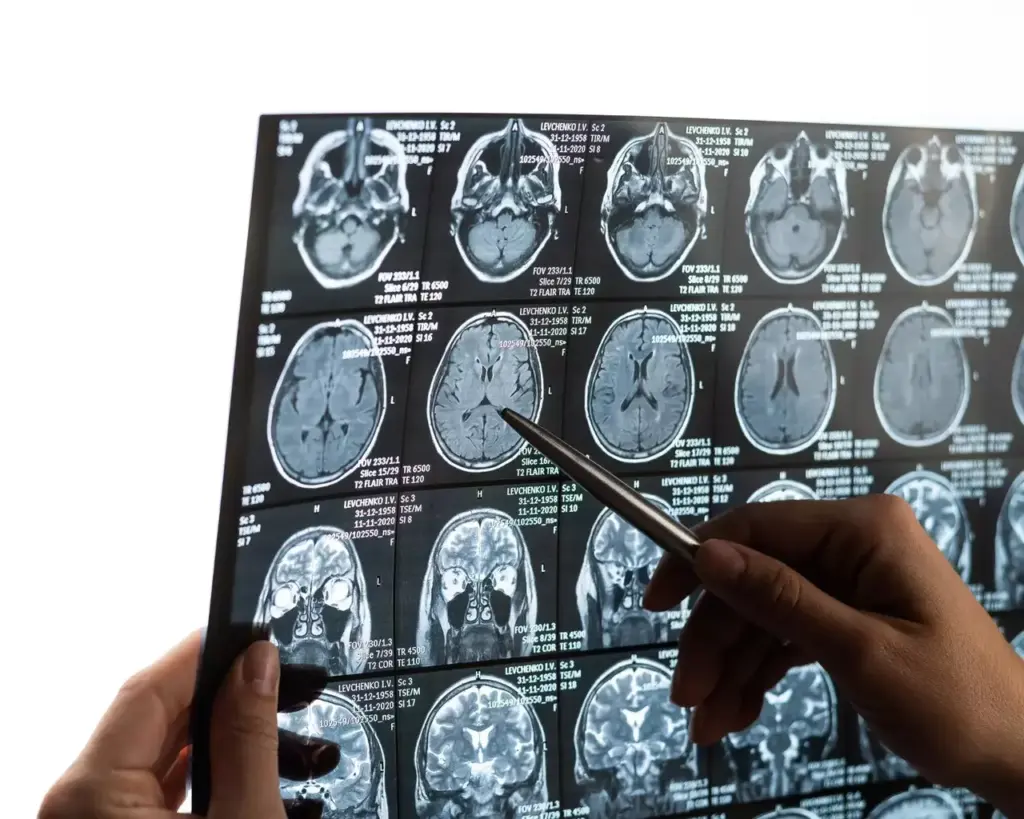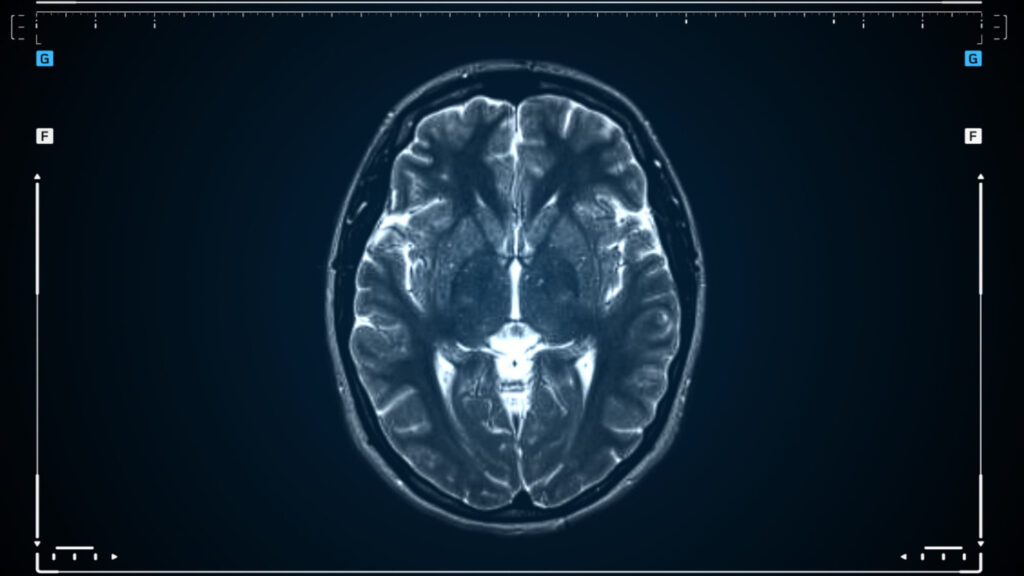Last Updated on November 3, 2025 by mcelik

At Liv Hospital, we know how tough brain tumor surgery can be. Our team is ready to help with top-notch care for patients from around the world. We use the newest tools in neurosurgery to remove tumors with care and skill.
Our doctors use craniotomy and neuroendoscopy to reach the brain. This is often to take out tumors, which can be cancerous or not. New studies show big steps forward in brain cancer surgery. This includes new ways to do surgery and better ways to see inside the brain.

A brain tumor is a mass of abnormal cells in the brain. It can be benign or malignant. These tumors can greatly affect a person’s life, depending on their size, type, and location.
Brain tumors are divided into two types: malignant and non-malignant. Malignant brain tumors are cancerous and grow fast. They can spread to other brain tissue. On the other hand, non-malignant brain tumors grow slower and might not be cancerous. Yet, they can cause problems because of their size and location.
Knowing the type of brain tumor is key to finding the right treatment. The Global Burden of Disease study shows how important early diagnosis and treatment are, including for cancer.
The symptoms of a brain tumor vary based on its location and size. Common signs include:
It’s vital to recognize these symptoms early for timely medical help.
Early diagnosis of a brain tumor is key for effective treatment. When caught early, tumors can be treated better. This can reduce complications and improve the patient’s life quality.
| Diagnosis Stage | Treatment Options | Prognosis |
|---|---|---|
| Early Stage | Surgery, Radiation Therapy | Generally Better |
| Late Stage | Combination Therapy, Palliative Care | Generally Poorer |
We stress the need to see a doctor if symptoms don’t go away or get worse. Early treatment can greatly improve outcomes for brain tumor patients.

Our team does a detailed pre-surgical check to make sure patients get the best and safest treatment for their brain tumor. This step is key to figuring out if the tumor can be removed and to check the patient’s health overall.
Advanced imaging is key in checking brain tumors. We use MRI and CT scans to see where the tumor is, how big it is, and what it’s like. These tools help us plan the surgery by showing how the tumor affects the brain around it.
We look at several things to see if the tumor can be removed. We consider the tumor’s type, where it is, and how big it is. We also check how close it is to important brain parts. Plus, we look at the patient’s health and any risks of surgery.
We do a deep check on each patient to find any risks or problems that might happen during or after surgery. We look at their medical history, current health, and any medicines they take. This helps us make a treatment plan that fits each patient’s needs.
By using top-notch imaging and a detailed patient check, we can find the best treatment for brain tumor patients. This way, we make sure the surgery goes well.
Brain tumor operations are very complex. They need careful planning, the latest technology, and a team of experts. We know how delicate these operations are. We take a detailed approach to get the best results for our patients.
Our team includes skilled neurosurgeons, anesthesiologists, and nurses. The neurosurgeons have a lot of experience in brain tumor surgery. They work with great care and precision.
The anesthesiologists are experts in anesthesia for brain surgery. They make sure patients are comfortable and safe during the operation.
Our team works together well. We review patient data, plan the surgery, and do the operation together. This teamwork is key to success.
The operating room has the latest technology for brain tumor surgery. We have advanced navigation systems, intraoperative imaging, and monitoring equipment. These tools help our team work more precisely and safely.
Anesthesia is very important in neurosurgery. It affects patient safety and the success of the surgery. Our anesthesiologists are experts in anesthesia for brain tumor surgery. They consider many factors, like patient position and blood flow in the brain.
They focus on keeping the right anesthesia levels, managing blood flow, and helping the patient recover quickly. The anesthesiologist and neurosurgeon work together to meet each patient’s needs.
The journey to a successful brain tumor surgery starts with thorough preparation. It’s key for a good outcome, and our team is here to help every step of the way.
Before brain tumor removal surgery, patients need to go through tests. These tests are to make sure they’re ready for surgery. They include:
These tests help our team understand the patient’s situation. They make informed decisions about the surgery.
Managing medications before surgery is very important. We tell patients which medicines to keep taking or stop. This includes:
Our team gives personalized advice for a safe and smooth surgery.
On surgery day, patients need to follow certain rules. These rules help avoid risks and ensure a good outcome. They include:
By following these instructions, patients can help make their brain tumor removal surgery a success.
A craniotomy is a surgery where a part of the skull is removed to reach the brain. This is a key step in removing tumors. Our neurosurgeons use advanced methods and great precision for this complex task.
To start a craniotomy, we find the best spot to access the brain based on the tumor’s location. We use top-notch imaging to plan the skull access site. This ensures we don’t harm too much of the brain.
Next, we make a bone flap. This is a part of the skull we remove to see the brain. We use special tools to cut and remove this section carefully. We make sure it can be put back later without problems.
After taking out the bone flap, we open the dura mater. This is the protective layer around the brain. By doing this, our surgeons can get to the tumor safely.
The craniotomy is a mix of skill, technology, and knowledge. For more info on this surgery, check out Mayo Clinic’s page on Craniotomy.
| Step | Description | Key Considerations |
|---|---|---|
| 1 | Planning and Imaging | Accurate tumor localization |
| 2 | Skull Access | Minimal disruption to brain tissue |
| 3 | Bone Flap Creation | Preservation of bone integrity |
| 4 | Dural Opening | Careful handling to avoid brain damage |
| 5 | Brain Exposure | Access for tumor removal |
We focus on keeping patients safe and getting the best results in brain tumor surgery. By using the latest tech and our neurosurgical team’s skills, we aim for the best outcomes.
Neuroendoscopy has changed brain tumor surgery for the better. It’s a less invasive way than old-school open surgery. This method uses a small endoscope and special tools to remove tumors through a small cut. This cuts down on damage to tissue and helps patients heal faster.
Neuroendoscopy is great for tumors hard to reach with traditional surgery. It’s perfect for tumors near the ventricles or causing hydrocephalus. Doctors decide on neuroendoscopy based on the tumor’s size, location, and type.
It’s used for tumors that are:
The success of neuroendoscopy depends on top-notch equipment and navigation. High-definition cameras, special endoscopic tools, and neuronavigation systems are key. These tools help us find the tumor and avoid important brain areas, making surgery safer.
Advanced navigation systems are vital for safe and effective neuroendoscopy. They help by:
Neuroendoscopy beats traditional surgery in many ways. It means less recovery time, less pain after surgery, and smaller scars. This approach makes surgery safer and leads to better results for patients.
“The use of neuroendoscopy in brain tumor surgery represents a significant advancement in neurosurgical techniques, providing patients a safer and more effective treatment option.”
In summary, neuroendoscopy is a game-changer for brain tumor treatment. It offers a less invasive option that helps patients recover faster and get better results.
Our team uses the latest techniques for removing brain tumors. This ensures the best results for our patients. We use advanced imaging, precise surgery, and careful care after surgery.
Advanced imaging is key in finding brain tumors. MRI and CT scans give us detailed pictures. This helps our surgeons plan the best surgery.
Advanced Imaging Techniques:
A leading neurosurgeon says, “Advanced imaging has changed neurosurgery. It makes tumor removal safer and more precise.”
“Advanced imaging has greatly improved neurosurgery. It helps us find and remove tumors more accurately.”
Brain mapping is vital in brain tumor surgery. It helps keep important brain functions safe. Our surgeons map out critical areas to avoid them during surgery.
Key aspects of brain mapping include:
| Technique | Purpose | Benefits |
|---|---|---|
| MRI | Tumor localization | High-resolution imaging |
| fMRI | Brain function mapping | Precise identification of critical areas |
| Intraoperative stimulation | Real-time brain function verification | Enhanced safety during surgery |
The way we remove tumors depends on the tumor’s type, size, and location. Our surgeons use many techniques, like microsurgery and neuroendoscopy.
We combine advanced imaging, precise mapping, and tailored removal methods. This way, we get the best results in removing brain tumors safely.
After removing the brain tumor, the next step is closing the surgical site. This is key for a safe recovery and to avoid complications.
After removing the tumor, we put back the bone flap that was taken out. We use plates, screws, or other devices to secure it. This helps keep the skull strong and protects the brain.
Key aspects of bone flap replacement include:
After fixing the bone flap, we start closing the wound in layers. We first close the dura mater, then the muscle and skin. Each layer is closed carefully to help healing and prevent leaks.
| Layer | Closure Technique | Purpose |
|---|---|---|
| Dura Mater | Suturing or using a dural substitute | Prevent CSF leakage |
| Muscle and Fascia | Suturing with absorbable or non-absorbable materials | Provide support and promote healing |
| Skin | Suturing or stapling | Close the wound and promote skin healing |
After closing the wound, the patient goes to the Intensive Care Unit (ICU). The ICU team watches over post-operative patients closely. They quickly spot and fix any problems.
We make sure the patient is comfortable and safe during the move. We have all the right equipment and staff ready to care for them.
The recovery and rehabilitation after brain tumor surgery are key to patient success. Our team offers detailed care tailored to each patient’s needs.
The first 48 hours post-surgery are vital. We watch patients closely to catch and fix any problems quickly. This helps us give the best care possible.
During these first 48 hours, we focus on:
Though surgery is usually safe, complications can happen. Our team is ready to handle these issues. Possible problems include:
We keep a close eye on patients and have a detailed care plan. This helps us avoid complications and get the best results. For more on brain tumor surgery, check out our guide on brain tumor surgery.
Rehabilitation is a big part of getting better. Our patients get various therapies to regain strength and function. These include:
We tailor our rehabilitation to meet each patient’s needs. This ensures they get the right support for a full recovery.
We combine top-notch medical care with a focus on the patient. This helps our patients feel confident in their recovery. Our aim is to help them get back to their lives as quickly and safely as possible.
When surgery isn’t an option, other treatments can help manage brain tumors. For patients with inoperable brain tumors, treatments like radiation therapy and chemotherapy can be effective.
Advanced radiation therapy options target tumors precisely, protecting the brain. Stereotactic radiosurgery is a notable example, delivering high doses of radiation directly to the tumor.
These advanced radiation therapies have shown promise in managing inoperable brain tumors. They improve patient outcomes and quality of life.
Targeted chemotherapy protocols use drugs that target cancer cells. This approach minimizes side effects and maximizes effectiveness. We use the latest research to choose the best chemotherapy regimen for each patient.
Key benefits of targeted chemotherapy include:
Emerging treatments and clinical trials offer new hope for patients with inoperable brain tumors. We stay at the forefront of these developments, providing access to cutting-edge therapies.
Some of the emerging treatments include:
| Treatment | Description |
|---|---|
| Immunotherapy | Boosts the body’s immune system to fight cancer |
| Gene therapy | Targets genetic mutations driving tumor growth |
By participating in clinical trials, patients can access innovative treatments. This helps advance brain tumor care.
Recent advancements in brain tumor surgery have greatly improved patient results. At Liv Hospital, we focus on the latest care innovations. This ensures the best outcomes for our patients.
We combine expertise, compassion, and advanced technology. Our goal is to make a real difference in the lives of those with brain tumors.
The field of brain tumor surgery keeps growing. New methods and tools are being developed. These help make surgeries more precise and reduce recovery times.
Our mission is to offer top-notch healthcare to international patients. We aim to achieve this through our work in brain tumor surgery and more.
By using the newest brain tumor surgery innovations, we can better patient outcomes. We are dedicated to providing care that meets each patient’s unique needs. This ensures they get the best treatment and support on their journey.
Brain tumor surgery is a complex procedure. It involves removing a tumor from the brain. Our team uses advanced techniques and technology for the best results.
We treat both malignant and non-malignant brain tumors. Malignant tumors are cancerous and grow fast. Non-malignant tumors grow slower and may not be cancerous.
Our team uses MRI and CT scans to check the tumor’s location and size. We also look at the patient’s health and the surgery risks.
A craniotomy removes part of the skull to access the brain. Our surgeons use advanced techniques to open the skull safely and effectively.
Neuroendoscopy is a minimally invasive technique for removing certain brain tumors. It uses a small endoscope and instruments through a small incision.
Removing a brain tumor requires precise techniques. We use advanced imaging and brain mapping to remove the tumor safely while preserving brain tissue.
Brain tumor surgery carries risks, including complications and side effects. Our team closely monitors patients in the first 48 hours and manages any complications quickly.
Recovery and rehabilitation are key for the best outcomes. Our team provides physical, occupational, and speech therapy to help patients regain strength and function.
Yes, there are alternative treatments for inoperable brain tumors. These include advanced radiation therapy, targeted chemotherapy, and emerging treatments and clinical trials.
Success is measured by how much tumor is removed, the patient’s health, and their ability to regain strength and function. Our team closely monitors patients during recovery for the best outcomes.
Yes, benign brain tumors can be removed surgically. Our team uses advanced techniques and technology for safe and effective removal.
Neurosurgery is critical in treating brain tumors. Our team of neurosurgeons uses effective approaches for each patient, including tumor resection and craniotomy.
Preparing for surgery involves several steps. These include pre-operative testing, medication management, and following our instructions for the day of surgery.
Subscribe to our e-newsletter to stay informed about the latest innovations in the world of health and exclusive offers!
WhatsApp us